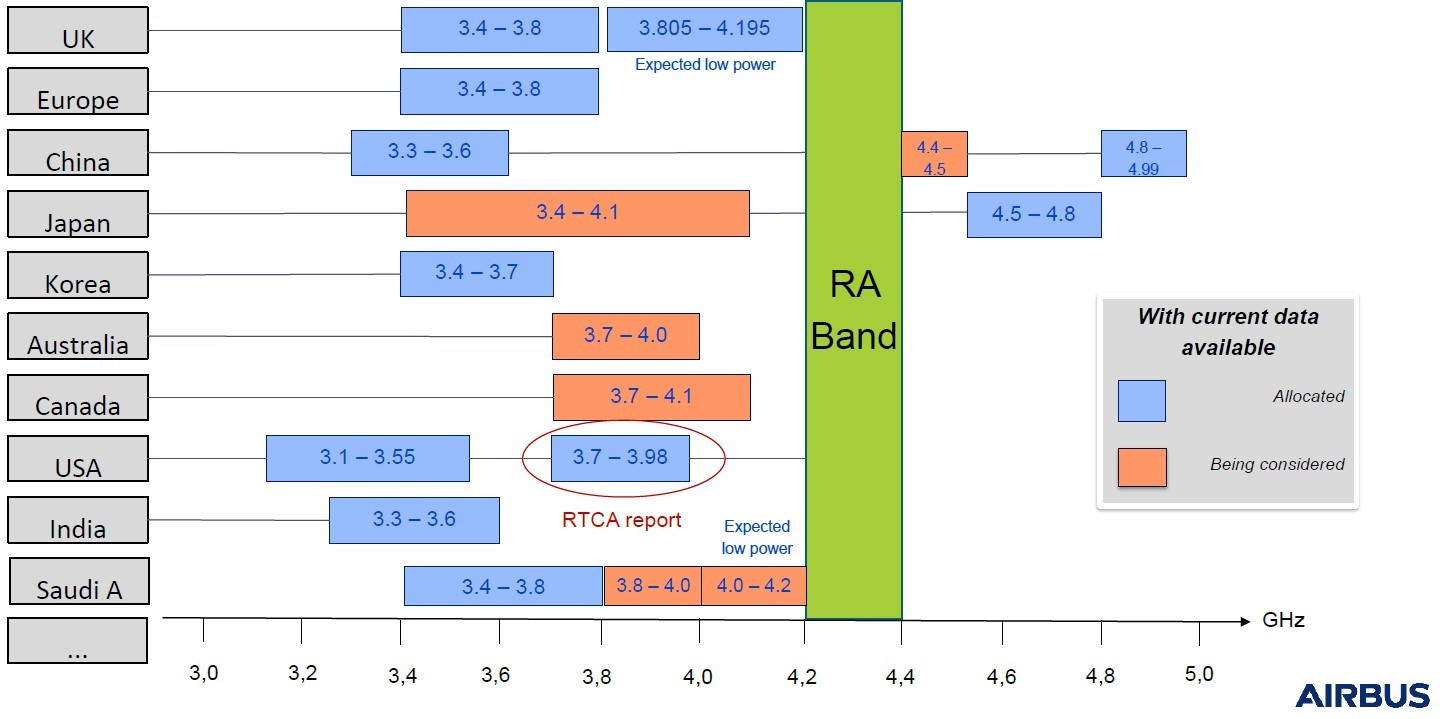US airlines fear that the rollout of 5G will cause interference with radio altimeters, the devices that allow their planes to land safely.
To understand, let’s think of it in a different way: imagine you are on a motorway and, because of roadworks, the hard shoulder is closed and the other two lanes are narrower. Drivers are asked to slow down and are always afraid of hitting the car next to them.
The motorway is the frequency band. There is no construction, but there is a fear that two 'drivers' will come too close together: 5G is deployed in the United States on the C-band between 3.7 and 3.98 GHz, and aircraft radio altimeters on the same C-band, but between 4.2 and 4.4 GHz.
Europe has not decided either
The question is whether the distance is sufficient to avoid interference. Potential interference, say the airlines, could render the valuable altimeters totally ineffective, especially in low visibility.
The US aviation and telecoms regulators are passing the buck, but in the face of controversy, Verizon and AT&T, which spent $45.5bn and $23.4bn to buy the C-band needed for 5G (97% of the total), have agreed to delay the rollout until 19 January. They had agreed in early January to reduce the signal around 50 US airports considered key, between the plane's last mile and the approach.
Two years ago, the US telecoms regulator, then busy pushing satellite operators including SES, to free up this spectrum in return for nearly $10bn in compensation, had deemed this proximity on the C-band not to be a problem.
The Europeans have not yet answered this question. The European Committee for Electronic Communications is due to report on the matter shortly. When asked by Paperjam, the EC-CCC had not yet responded to our questions. But one thing is certain: the problem is not quite the same. In Luxembourg, for example, 5G is deployed in the same C-band, but between 3.42 and 3.75 GHz, i.e. further away from the radio altimeter spectrum.
At least six countries concerned
If Europeans are slow to take a stand, the Swiss Federal Office of Civil Aviation indicates in a recommendation that the subject is far from being of concern only to the United States. China, Japan, Australia, Canada and Saudi Arabia are also concerned, according to a document based on an Airbus study.

The red blocks indicate where in the world 5G could cause problems for aircraft radio altimeters. (Source: Airbus/OFAC)
Another report, from another US administration, the National Telecommunication and Information Administration, indicates that aviation is not the only point of concern, but that the problem arises in the same terms for helicopters, drones and even certain missiles.
In a rush, Reuters reports, the FAA approved two models of radio altimeters used in many Boeing and Airbus aircraft, including some Boeing 737s, 747s, 757s, 767s, MD-10/-11s and Airbus A310s, A319s, A320s, A321s, A330s and A350s. The FAA said the aircraft and altimeter approvals open, “runways at as many as 48 of the 88 airports most directly affected by 5G C-band interference". But the agency warned that, "even with these new approvals, flights at some airports could still be affected".
There is one documented case of a fatal accident due to a faulty radio altimeter. On 25 February 2009, nine people died, including the three pilots, when a plane flying from Ankara to Amsterdam crashed just before arriving at Schiphol.
This story was first published in French on . It has been translated and edited for Delano.
